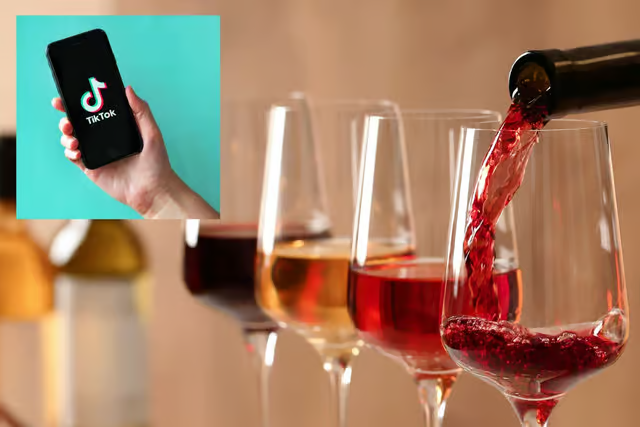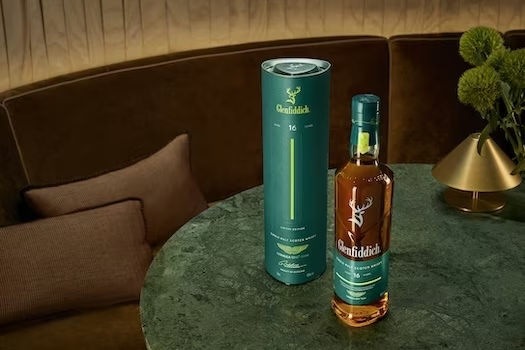Beverages: The New Sommelier: How TikTok is Driving Wine Trends and Reshaping the Market
- InsightTrendsWorld

- 9 hours ago
- 7 min read
Why it is the topic trending: The social media influence on wine culture
The rise of "winefluencers": This is a trending topic because it highlights how social media, particularly TikTok, is creating a new class of wine experts and tastemakers. These "winefluencers" are democratizing wine recommendations and introducing new brands to a younger, digitally native audience.
A new gateway to discovery: For many, the formality of traditional wine culture can be intimidating. TikTok is breaking down these barriers by making wine discovery fun and accessible, with trends like "Chicken wine" and "Spicy Sauvignon Blanc" serving as entry points.
The blend of quality and spectacle: The trend is driven by a mix of wines that have both a solid reputation (like Whispering Angel) and those that are popular purely for their novelty or viral potential (like XXL Moscato). This shows a shift in what drives consumer interest.
Overview: Wine brands go viral on TikTok
The article highlights a trend where wines are gaining massive popularity on TikTok, driven by "winefluencers" and viral content. According to a review by wine expert John Kelliher, these wines, while sometimes a good starting point for new drinkers, vary in quality. The analysis breaks down six popular wines, from a "consistent and stylish" French rosé nicknamed "Chicken wine" to a "sugar bomb" XXL Moscato and a "slightly edgy" rosé-orange hybrid from Aldi. The expert notes that while some viral wines have true craftsmanship, others succeed more on spectacle and novelty.
Detailed findings: The viral wine lineup
La Vieille Ferme Rosé (Chicken Wine): A French rosé known for its chicken-adorned label. It's described as a "summer staple" with notes of red berries and peaches.
Whispering Angel Rosé: A brand that is popular both for its aesthetic bottle and its taste. An expert says it "delivers on its reputation" with a "crisp, restrained, and beautifully structured taste."
Spicy Sauvignon Blanc Hack: A unique take on Sauvignon Blanc with a "fiery twist." An expert notes it is "not for the faint of palate."
XXL Moscato: A sweet wine known for its bold flavors and high alcohol content. It is described as "a sugar bomb with serious fanfare."
Miraval Rosé: A wine associated with actor Brad Pitt, with tasting notes of stone fruit and a saline finish. It is called "elegantly structured and aromatic" by the expert.
Rosorange (Aldi's Rosé-Orange Hybrid): A blend of rosé and orange wine that is recommended for those new to orange wine, described as "fun and slightly edgy."
Key success factors of this trend: From brand to spectacle
The success of these wines on TikTok is a result of a few key factors. First, they are highly shareable, either through a memorable name like "Chicken wine" or an aesthetic bottle design. Second, some of these wines offer a novelty or "hack" that creates buzz, like the spicy Sauvignon Blanc. Finally, some of the brands, like Whispering Angel and Miraval, already had a reputation for quality, which gives them credibility on the platform. The trend demonstrates that a combination of strong branding, a compelling story, and a unique product offering is key to going viral in the digital age.
Key Takeaway: The best wine isn't always the most expensive—it's the most shareable
The most significant takeaway is that the traditional rules of wine marketing are being rewritten. The "best" wine is no longer just about vintage or price point; it's also about its ability to generate social currency. Brands that can create a product that is fun, relatable, and easy to share are finding success with a new generation of consumers, proving that a wine's digital presence is now as important as its flavor profile.
Main Trend: Social Media-Driven Consumption
Description of the trend: The democratizing of taste
This trend is the growing influence of social media platforms, like TikTok, on consumer purchasing decisions. It moves away from traditional, expert-led reviews and towards peer-to-peer recommendations and viral challenges. It is characterized by a rapid, often unpredictable, rise in popularity for products that are highly visual, have a unique story, or can be easily incorporated into social media content.
Key Characteristics of the Core trend: The power of the "winefluencer"
Content-First Product Selection: The products that go viral are often those that lend themselves to engaging video content (e.g., a "sugar bomb" wine with a bold name).
Influence from Peers: Consumers trust recommendations from individuals on social media more than they trust traditional advertising or formal critics.
Focus on Accessibility: The trend often spotlights wines that are affordable and easy to find, making them accessible to a broad audience.
Hybrid of Quality and Novelty: Popularity is driven by a mix of genuine quality and the sheer spectacle or "edginess" of the product.
Market and Cultural Signals Supporting the Trend: The rise of digital discovery
The "Experience" Culture: Consumers, particularly Gen Z and millennials, are seeking out experiences and are eager to share them online, and a unique or viral wine fits perfectly into this model.
The Decline of Traditional Media: As younger consumers move away from print magazines and television, they are increasingly relying on social media for product recommendations and information.
The Rise of Home-Based Entertainment: The trend was accelerated by a period of increased home consumption, where consumers were looking for new and interesting products to try and share with their digital communities.
What is consumer motivation: To feel "in the know" and connect with others
To Feel Valued and Connected: Consumers are motivated to try these wines to feel part of a community and to participate in a shared experience.
Fear of Missing Out (FOMO): The viral nature of these products creates a sense of urgency, as consumers want to be "in the know" and try the latest trend before it's over.
Ease of Discovery: The simple, visual nature of TikTok recommendations makes it easy for consumers to find new products without feeling overwhelmed.
What is motivation beyond the trend: Self-expression and social currency
Beyond the immediate trend, consumers are motivated by social currency. By posting about their consumption of a viral wine, they are able to signal their knowledge of trends and their participation in a larger social conversation. They are also motivated by self-expression, as the wines they choose to post about become part of their personal brand, whether they are a fun-loving "sugar bomb" enthusiast or a sophisticated fan of "elegantly structured" rosé.
Descriptions of consumers: The digitally savvy explorer
Consumer Summary: This consumer is active on social media platforms like TikTok and Instagram. They are open to trying new products and are influenced by peer recommendations. They may be new to the world of wine and are looking for fun, accessible entry points. They are not necessarily collectors or connoisseurs but are interested in products that are part of a larger cultural conversation.
Who are them? Social media users, often new to wine.
What is their age? Primarily Gen Z and millennials, though the appeal can extend to other digitally active demographics.
What is their gender? The article does not specify, but the trend has a broad appeal.
What is their income? Likely mid-range, as many of the wines highlighted are affordable and accessible.
What is their lifestyle? Socially active, digitally connected, and eager to discover new experiences and share them with their online community.
How the Trend Is Changing Consumer Behavior: From passive buyer to active creator
From Curation to Creation: Consumers are no longer just passively consuming content; they are actively creating it by reviewing wines, sharing hacks, and participating in challenges.
Accelerated Product Cycles: The viral nature of social media can propel a wine to massive popularity overnight, drastically shortening the time it takes for a brand to become a household name.
Visual-First Decision-Making: The appearance of the bottle and its "shareability" are now as important as the taste.
Implications of trend Across the Ecosystem: A new marketing playbook for wine brands
For Consumers:
They get to discover new wines in a fun, accessible way.
They have a platform to share their own opinions and become "experts."
For Brands and CPGs:
Wine brands must now consider their social media presence and visual branding.
The trend opens up a new, highly effective, and often low-cost marketing channel.
For Retailers:
Retailers can use social media trends to predict demand and tailor their inventory.
They can leverage in-store displays and promotions that are tied to viral trends.
Strategic Forecast: The era of the "unconventional" wine
More brands will create "viral-ready" products: Wine brands will start to design products with social media in mind, focusing on fun names, unique packaging, and bold flavors.
Gamification of wine discovery: Wine apps and brands will create more interactive, gamified experiences to engage consumers on social media.
The rise of unconventional pairings and "hacks": The spicy Sauvignon Blanc hack is just the beginning. The future of wine consumption will involve more creative and unconventional ways to enjoy wine.
The decline of the traditional critic: While traditional critics will always have a place, their influence will continue to wane as consumers increasingly rely on their peers and "winefluencers" for recommendations.
Areas of innovation: The future of wine marketing
Augmented Reality (AR) Labels: Wine labels that come to life with an AR app, sharing tasting notes or a video from the winemaker.
Interactive Tasting Videos: Brands can host live, interactive tasting sessions on TikTok or Instagram, where viewers can ask questions in real-time.
AI-Driven Trend Prediction: Using AI to analyze social media data to predict the next viral wine trend, allowing brands to get ahead of the curve.
Micro-Collaborations with "Winefluencers": Instead of a single, expensive ad campaign, brands will partner with a large number of micro-influencers to reach a more targeted and authentic audience.
Hybrid Wine Concepts: More brands will experiment with hybrid wine concepts, like Rosorange, to appeal to consumers who are looking for something new and different.
Summary of Trends: The new face of wine
Core Consumer Trend: The search for accessible, fun, and shareable products.
Core Social Trend: The democratization of expertise and influence through social media.
Core Strategy: A marketing shift from traditional advertising to digital, peer-to-peer engagement.
Core Industry Trend: The wine industry's pivot to embrace digital marketing and a younger consumer base.
Core Consumer Motivation: A desire to feel "in the know," to express one's identity, and to connect with others through shared experiences.
Final Thought: A digital revolution for an ancient craft
The rise of TikTok-viral wines marks a fascinating new chapter for the wine industry. It’s a testament to the power of social media to reshape even the most traditional markets. By embracing new forms of communication and understanding what makes a product shareable, wine brands are connecting with a new generation of drinkers. The focus has shifted from the solemn ritual of tasting notes to the joyful, communal, and often quirky experience of discovery, proving that for an ancient craft, the future of its appeal lies in its ability to adapt to the digital age.




Comments